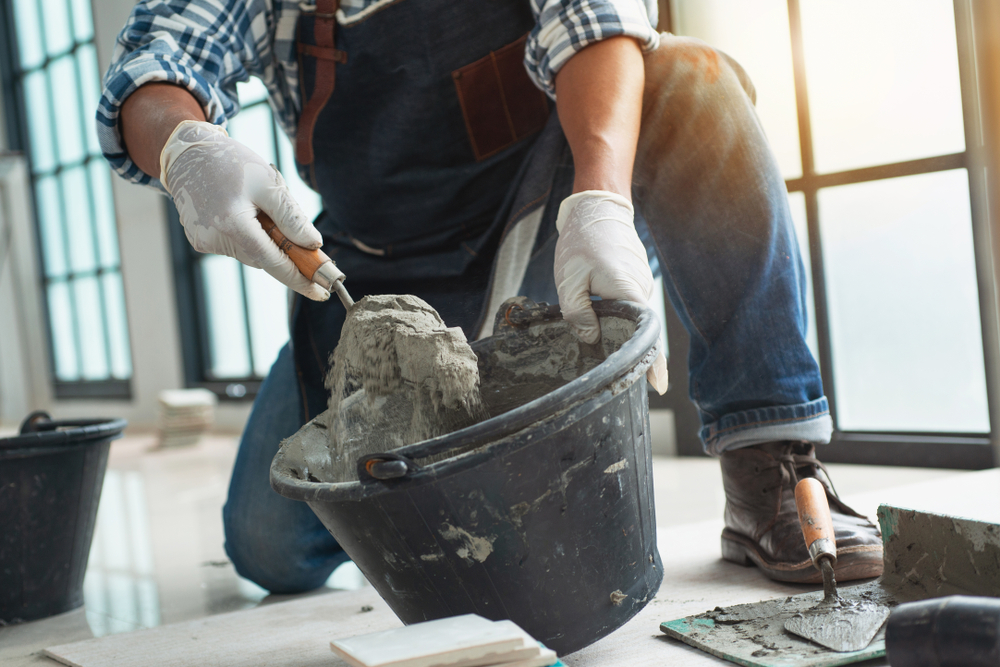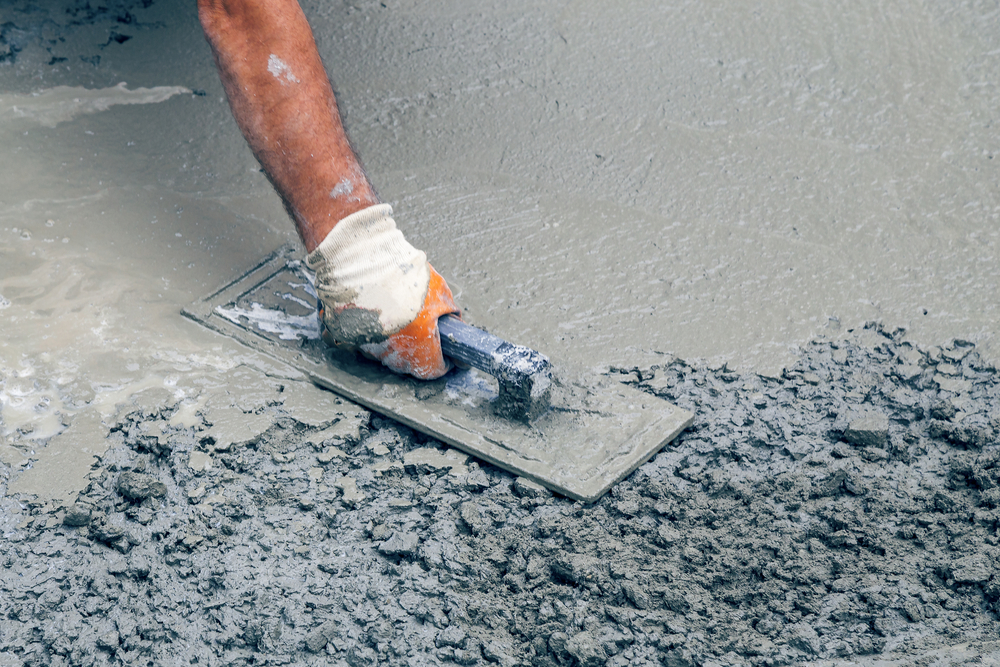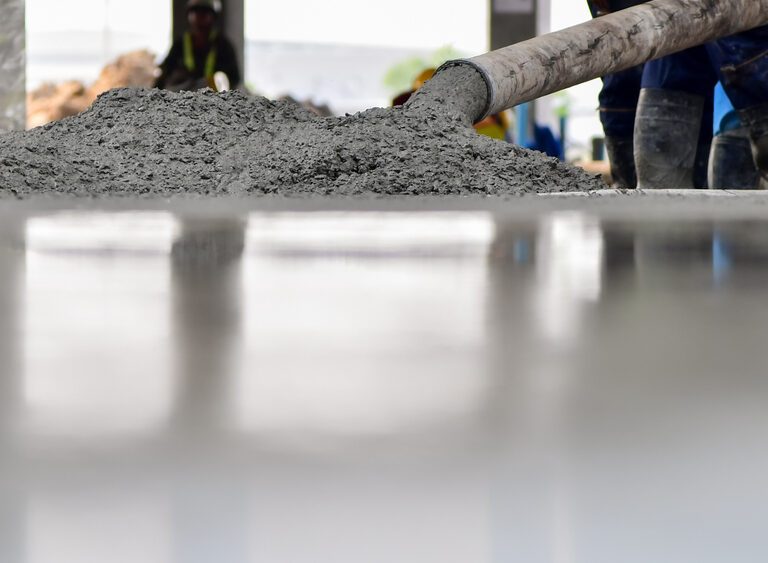Often thought of as interchangeable elements, cement and concrete are different materials with varied building functions. It is important to understand the difference between these two materials if you want to use them correctly and put them to work in the proper building projects.
In this article, we will give you a breakdown of the main differences between cement and concrete regarding their material makeup and best building uses, leaving you with all the information you need to either speak to construction professionals or work on your own DIY projects.
What Is Cement?

Cement is comprised of an assortment of materials including limestone, clay, shells, and silica sand; limestone is often the most prominent ingredient in this mix. All of these ingredients are mixed together and then crushed and combined with materials such as iron ore. The entire mixture is then heated to approximately 2,700 degrees Fahrenheit.
The result of this process is a fine mix, commonly referred to as “clinker,” which then gets ground down into a fine powder. This powder is packaged for separate purchase, and can be mixed into other ingredients to achieve concrete or mortar – this is where most people get confused between cement and concrete. Cement is a component of concrete, but it can also be used separately in certain situations.
There are multiple types of cement available today, each designed to have different construction properties. There are at least 6 main types of cement, but you may find more when doing serious research into types of cement and their properties.
You should also know that when used alone, cement is not very durable and runs a higher risk of cracking or wearing down than its concrete counterpart.
The Best Projects for Cement
Cement is best used for smaller building projects or for DIY projects around the home. You can purchase bags of cement powder from your nearest hardware store and mix it with water to use, making it a fairly simple material to use by yourself.
In construction areas, cement will typically be used to stick materials together, as once the cement powder is combined with water, it will harden and bind whatever it is touching. Cement will also be used as a component of concrete, acting as the binding agent in any type of concrete mix.
What Is Concrete?

Concrete is a highly durable building material comprised of cement, sand, and gravel or other fine and coarse aggregate. The addition of sand and gravel elements to cement are what make it concrete, and when mixed with water, the binding properties of the cement will activate, allowing the concrete to be poured into molds where it will harden.
Concrete is much more popular in building projects than cement thanks to its added durability and increased flexibility when it comes to pouring the mixed and activated materials into molds or building structures. Concrete is less prone to cracking and is fire resistant, making it a great choice for creating foundational structures. It is also highly sustainable and a greener building option, adding to its popularity.
When mixing concrete, you should be careful about how much water you are adding in. Less water is better, and adding too much into the mix will result in weaker concrete. However, too little water and the concrete won’t be useable. To make sure your batch of concrete is mixed approximately before use, you can perform a slump test with it to check the consistency.
The Best Projects for Concrete
More durable than cement thanks to the added ingredients, cement is perfect for use in larger building projects. It is used as a primary building material for foundation walls, creating concrete slabs, patios, and building up other masonry structures.
You can purchase pre-mixed bags of concrete at your local hardware store that you only need to mix water into before using. Keep in mind there are many different types of concrete mix that you can choose from. If you are working with a larger project, you also have the option of ordering a pre-mixed amount of concrete to be delivered to you by truck.
What About Mortar?
Mortar is another building material partly comprised of cement, with the other ingredients being fine sands and occasionally a hydrated lime. You may have heard about it when trying to research cement and concrete, as it is often part of the conversation of building materials.
Also activated by water, mortar forms an almost paste-like substance that can then be spread on building materials or in between items to bind them. It acts as a type of glue for many building materials, holding them together, but it’s almost never used by itself to build foundational structures; it is not quite strong or durable enough.
The Best Projects for Mortar
Mortar is best used for smaller building projects where items need to be stuck together. It is best for laying brick patios and pavements, though you do need to be sure you select the right grade of mortar for your project before use.
You can buy ready mixed mortar powders at your local hardware store that just need water to be added into them for use. Like with concrete, you should be careful with how much water you add into the mix, or you might end up with a substance that is too weak or unusable.
Cement and Concrete Comparison Chart
This chart will help you see the main differences between these materials and can be used as a quick reference guide when choosing between cement and concrete.
Cement
- Better for smaller projects
- Can crack and wear down over time
- 6 main types of cement available
- Often used alone or as a binding agent
- Activated with water
- Consists of limestone, clay, and silica sand
- Can be purchased by the bag and mixed
Concrete
- Better for larger projects
- Extremely durable
- 20 main types of concrete available
- Includes cement as a binding agent
- Activated with water
- Consists of cement and fine sand or gravel
- Can be purchased by the bag or truck load
Understanding the Differences in Materials
The concepts of cement and concrete can be confusing, especially to newcomers to the building DIY world. However, the difference between these materials can be easily spotted, and understanding the best usages for both cement and concrete will help you when speaking to professional construction workers, or when choosing out a material to use in projects around your home.
